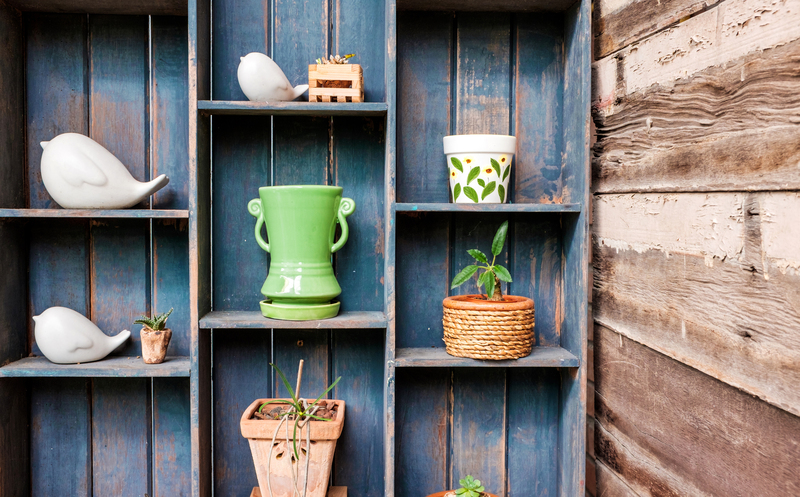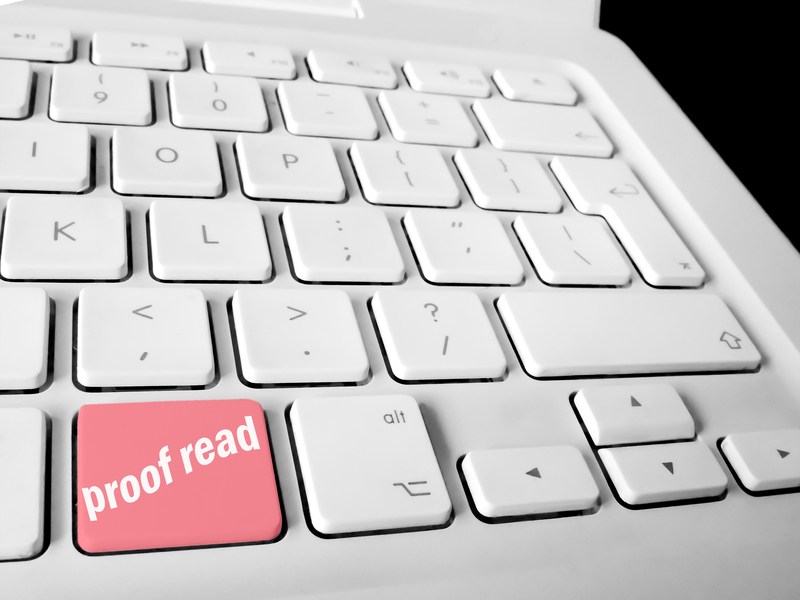From Chaos to Clarity: A Guide to Clutter Removal
Are you feeling overwhelmed by endless clutter at home or work? Do you crave a peaceful, organized space but don't know where to start? You're not alone! In today's fast-paced world, clutter creeps up quietly, creating confusion and stress. This comprehensive guide to clutter removal will walk you step-by-step from chaos to clarity, helping you transform your environment--and your mindset. Read on to uncover expert decluttering tips, quality strategies, and actionable advice for achieving--and maintaining--an organized life.

Table of Contents
- Why Does Clutter Accumulate?
- The Real Impact: How Clutter Affects Your Life
- Prepare for Your Clutter Removal Journey
- Step-by-Step Clutter Removal Guide
- Room-by-Room Clutter Removal Strategies
- Decluttering Tips and Tricks for Lasting Change
- How to Maintain a Clutter-Free Space
- Resources for Further Reading
- Frequently Asked Questions
Why Does Clutter Accumulate?
Clutter doesn't appear overnight. It's a slow and often unnoticed process. Understanding why clutter accumulates is key to breaking the cycle and achieving lasting change.
- Emotional Attachment: We often hold on to things for sentimental reasons--even if we no longer use them.
- Busy Schedules: A hectic lifestyle frequently means postponing tidying up until it becomes unmanageable.
- Consumer Culture: In an age of easy shopping, items pile up faster than we declutter them.
- Unclear Storage Solutions: Without smart storage, even necessary items can create the illusion of chaos.
- Procrastination: It's easy to delay clutter removal, believing we'll "get to it someday."
The Real Impact: How Clutter Affects Your Life
Clutter isn't just a visual nuisance--it has real impacts on mental clarity, emotional health, relationship dynamics, and even financial well-being. Let's break down the significant effects that clutter can have:
- Stress & Anxiety: A chaotic space overstimulates the mind and increases stress levels.
- Reduced Productivity: It's difficult to focus when your environment is disorganized.
- Health Hazards: Dust, mold, and trip hazards are common when items accumulate unchecked.
- Strained Relationships: Shared spaces filled with clutter often strain family or roommate dynamics.
- Financial Waste: Buying duplicates of forgotten or misplaced items costs money.
Removing clutter is not simply about aesthetics--it's about reclaiming your peace, your health, and your home.
Prepare for Your Clutter Removal Journey
Before tackling the mountain, a little preparation sets you up for success. Here's how to gear up for effective decluttering:
- Set Clear Goals: Define your motivation. Do you want less stress, more space, or easier cleaning? Write it down to stay inspired.
- Gather Supplies: Stock up on trash bags, boxes for donations, and labels to make sorting easier.
- Schedule Time: Treat decluttering as a priority appointment. Block out time--whether it's an hour a day or a weekend marathon.
- Create a Sorting System: Plan how you'll categorize items (keep, donate, recycle, trash, undecided).
- Enlist Help: Family or friends can make the process lighter--and more fun!
Tip: Play upbeat music to keep your energy high!
Step-by-Step Clutter Removal Guide
Ready to banish disorder? Here's a step-by-step blueprint for decluttering any space:
1. Start Small
- Pick one area -- a single drawer, shelf, or surface. Tackling too much at once can lead to burnout.
2. Empty and Clean
- Take everything out of your chosen area. Clean spaces before putting anything back.
3. Sort Ruthlessly
- Decide on each item: Do you use it regularly? Does it bring you joy? Is it broken, expired, or obsolete?
- If the answer is 'no,' it's time to let it go!
4. Decide What to Do With Each Item
- Keep: Only if it's useful, beautiful, or deeply meaningful.
- Donate: Give items a second life by passing them on to charity.
- Recycle: Be environmentally conscious with papers, plastics, or electronics.
- Trash: Dispose of items that are beyond repair or use.
- Undecided: Place in a designated "maybe" box. Set a reminder to revisit it in 30 days.
5. Organize What You Keep
- Group similar items and assign them logical, accessible "homes."
- Use bins, labels, dividers, and shelves to maximize space and keep items visible.
6. Dispose of Discards Promptly
- Immediately trash, recycle, or donate items so they don't sneak back in!
Repeat this process for each area until your entire space is transformed. Remember, progress is more important than perfection!
Room-by-Room Clutter Removal Strategies
Every room has its own set of challenges and opportunities for decluttering. Here are some tested suggestions:
Bedroom
- Edit your wardrobe: Keep only the clothing you wear and love. Use the "hanger trick"--hang hangers backward, and flip them the right way only after wearing an item. Donate anything left backward after six months.
- Nightstand reset: Limit to essentials like a lamp, clock, and current book.
- Under-bed storage: Use shallow bins for seasonal clothing or extra bedding--just don't let it become a junk drop-zone.
Living Room
- Declutter flat surfaces--coffee tables, side tables, TV stands. Less is more!
- Reduce decorative items--keep only your favorites for a calming effect.
- Cord management--bundle and label electronics for safety and neatness.
Kitchen
- Countertops: Keep them mostly clear for food prep. Relocate or donate unused appliances.
- Pantry and fridge clean-out--check expiry dates and organize by category.
- Use vertical storage for pots, pans, and utensils to maximize cabinet space.
Bathroom
- Dispose of expired medications and toiletries.
- Limit each category (one shampoo, one body wash, etc.), and store backstock elsewhere.
Home Office
- Digitize paperwork whenever possible. Shred or recycle old documents.
- Keep your desktop clear except for essentials. Use trays or organizers for supplies.
Children's Rooms & Playrooms
- Regularly involve kids in the process. Donate outgrown toys and clothes together.
- Use labeled bins for easy clean-up and toy rotation.
Decluttering Tips and Tricks for Lasting Change
- One-In, One-Out Rule: Anytime you acquire something new, let go of something else.
- 30-Day Box: For undecided items, place them in a box. If you don't miss or use them in 30 days, let them go.
- Daily 10-Minute Tidy: Set a timer and do a speed clean each day to prevent build-up.
- Declutter by Category: For items like books or shoes, gather all at once and sort together.
- Practice Gratitude: When it's hard to say goodbye, thank the item for its service before letting go, Marie Kondo-style.
- Visualize the End Result: Keep a photo or magazine clipping of your dream space as inspiration.
- Get Support: Join online decluttering challenges or social media groups for accountability and fresh ideas.
How to Maintain a Clutter-Free Space
Successfully completing clutter removal is just the beginning. The true accomplishment is in maintaining your new clarity. Here's how:
- Make Decluttering Routine: Set monthly or season "tidy up" sessions on your calendar.
- Mindful Shopping: Only bring home what fulfills a real need or adds true value.
- Train Your Household: Get family members or housemates involved in keeping shared spaces uncluttered.
- Organize As You Go: Don't wait for chaos to return--reset spaces before leaving a room.
- Celebrate Progress: Appreciate your organized environment and reward yourself for keeping it that way!
Remember: Consistency is more powerful than occasional overhauls. A little daily effort keeps your space--and mind--clear.
Resources for Further Reading
- Becoming Minimalist - Minimalism inspiration and practical decluttering tips.
- KonMari Method by Marie Kondo - Spark joy and clarity with world-famous organization techniques.
- Unclutterer - Daily advice on organization and decluttering daily life.
Frequently Asked Questions
What is the fastest way to declutter my home?
Begin with high-traffic areas where clutter accumulates quickly--like entryways, kitchens, and living rooms. Use the "four box method" (keep, donate, trash, relocate) for each area you tackle and maintain momentum by setting a timer for 15-30 minutes per session.
How often should I declutter?
A full declutter yearly is ideal, but monthly mini-declutters help maintain clarity. Whenever a space feels crowded or unmanageable, that's a sign it's time for another session.
How do I get rid of emotional clutter?
Take photos of sentimental objects before letting go, gift heirlooms to loved ones, or designate a small "memory box." Remember, memories live in us--not just our things.
Are there professional clutter removal services?
Yes! Professional organizers and clutter removal companies can provide hands-on support, haul away discards, and set up systems tailored to your lifestyle.
What do I do with items I want to donate?
Research local charities, shelters, or community centers that accept donations. Many offer pick-up services for larger items. Always check guidelines so your contributions are welcomed and useful.

Start Your Decluttering Journey Today!
From chaos to clarity, clutter removal is a transformative journey--one that not only clears your physical space but also brings tranquility and focus to your daily life. With the guidance above, you're equipped to conquer clutter and reveal the calm, organized home you deserve. Embrace the process, celebrate each step, and enjoy the empowering clarity that follows!